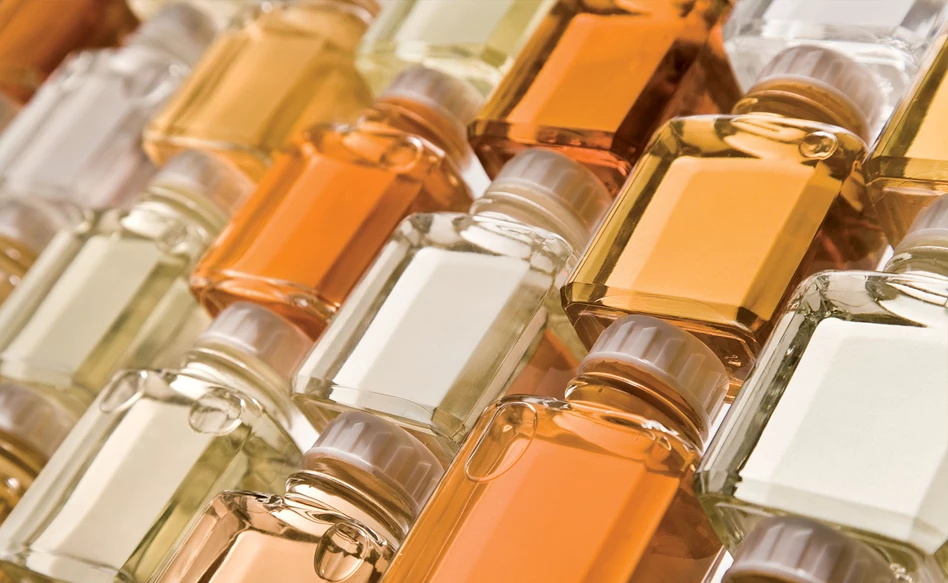
Binders
Pigments determine the colour of the paint, the lightfastness and the opacity or transparency. All other properties of a paint are determined by the binder. Some binders are liquid, others are solids that first have to be dissolved or mixed with a solvent (for example water or white spirit) in order to obtain a liquid binder. Thinners evaporate from the paint during the drying process.
Linseed oil
Linseed oil, obtained from the seeds of the flax plant, has been the most important binder for oil colours for more than five hundred years. Other drying oils produce a less durable paint layer, can darken considerably or have an overly long drying time. Unfortunately, an oil that is optimal for every desired property does not exist.
Linseed oil has proven over the centuries to possess the best combination of properties.
Safflower oil
Because, over time, linseed oil shows a certain degree of yellowing, linseed oil is sometimes replaced by safflower oil, particularly for white paint.
Safflower oil is pressed from the seeds of the safflower thistle. This oil yellows less than linseed oil, but the drying time is longer and the oil forms a paint film with different properties than linseed oil.
The use of white based on safflower oil in a layered structure of a painting, where it forms a substrate for colours based on linseed oil, can cause phenomena such as crackle or even detachment of layers of paint above. It is therefore advisable to limit the use of white paint based on safflower oil to the final phase of the painting.
Acrylic resin dispersion
An acrylic resin dispersion consists of a fine distribution of synthetic resin particles in water. The microscopic resin particles are suspended in the water, they are not dissolved. As the water evaporates the particles become closer together. Once they touch each other they merge to form a continuous synthetic film. A synthetic resin dispersion in water is milky white and once dry is colourless and transparent.
A common name for a dispersion-binder is latex. The term latex, however, is usually used when referring to a synthetic dispersion that is made not based on an acrylic resin, but based on a P.V.Ac. (polyvinyl acetate) resin or a derivative of this. An important difference is that latex is not alkaline resistant or much less so than acrylic resin.
Gum arabic
Gum arabic is a water-soluble resin from the acacia tree. The trees have grooves cut into them, which releases resin. The resin solidifies and is then 'plucked', dissolved in water and dirt is removed using a centrifuge. It is this solution that is used as the binder for water colour paints.
Kaolin
Raw kaolin from the quarry is first added to water to create a suspension (gunge). This suspension undergoes a number of treatments whereby various components are separated from one another through rinsing, and contaminants such as quartz and mica are removed from the kaolin (de-gritting). This results in a pure product, which is also called China clay or pipe clay.
Kaolin is the binder of Rembrandt soft pastel, Rembrandt carré pastel and Van Gogh pastel.
Waxes
Originally insect waxes (beeswax) were used. These days these have usually been replaced by synthetic waxes.
At Royal Talens waxes are used as an ingredient for Wasco, Panda oil pastels and Van Gogh oil pastels and as a matting agent in Picture Varnish mat 003 in bottles.
Dextrin
Dextrin is a starch product that is dissolved in water to form a liquid binder. As this product is sensitive to decay it is necessary to add a preservative. Dextrin is the binder of Talens Gouache extra fine and of the other quality poster paints. A special property of a dextrin solution is thixotropy. If we leave the paint alone it will automatically thicken. Through movement (stirring or painting) the paint becomes thinner again and will easily spread out.
Schellac
Shellac is a resin-like secretion of a louse, the Coccus lacca, that lives symbiotically on trees in India and other parts of Asia. Shellac can only be dissolved in water if the water is alkaline. After drying it is indelible for ordinary tap water.
Alkyd resin
Alkyd resins are synthetic resins that are made in combination with oil, for example linseed oil or soya bean oil. The oil makes the alkyd resin susceptible to yellowing under the effect of light. As a binder for paint the resin is dissolved in white spirit. Due to the presence of both oil and white spirit the drying is chemical as well as physical. As a result of the evaporation of the white spirit the brushstroke will partly disappear.